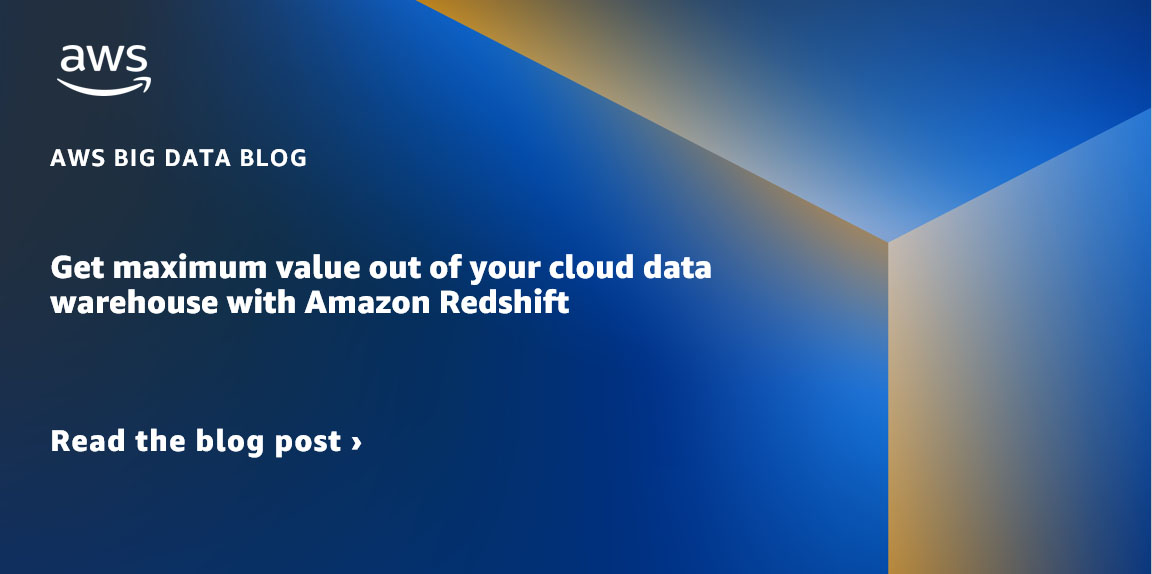AWS Big Data Blog
Tag: Data Warehouse
Dimensional modeling in Amazon Redshift
Amazon Redshift is a fully managed and petabyte-scale cloud data warehouse that is used by tens of thousands of customers to process exabytes of data every day to power their analytics workload. You can structure your data, measure business processes, and get valuable insights quickly can be done by using a dimensional model. Amazon Redshift […]
Get maximum value out of your cloud data warehouse with Amazon Redshift
Every day, customers are challenged with how to manage their growing data volumes and operational costs to unlock the value of data for timely insights and innovation, while maintaining consistent performance. Data creation, consumption, and storage are predicted to grow to 175 zettabytes by 2025, forecasted by the 2022 IDC Global DataSphere report. As data […]
How SafetyCulture scales unpredictable dbt Cloud workloads in a cost-effective manner with Amazon Redshift
This post is co-written by Anish Moorjani, Data Engineer at SafetyCulture. SafetyCulture is a global technology company that puts the power of continuous improvement into everyone’s hands. Its operations platform unlocks the power of observation at scale, giving leaders visibility and workers a voice in driving quality, efficiency, and safety improvements. Amazon Redshift is a […]
Manage data transformations with dbt in Amazon Redshift
Amazon Redshift is a fully managed, petabyte-scale data warehouse service in the cloud. You can start with just a few hundred gigabytes of data and scale to a petabyte or more. Amazon Redshift enables you to use your data to acquire new insights for your business and customers while keeping costs low. Together with price-performance, […]
Automate Amazon Redshift cluster creation using AWS CloudFormation
In this post, I explain how to automate the deployment of an Amazon Redshift cluster in an AWS account. AWS best practices for security and high availability drive the cluster’s configuration, and you can create it quickly by using AWS CloudFormation. I walk you through a set of sample CloudFormation templates, which you can customize as per your needs.




